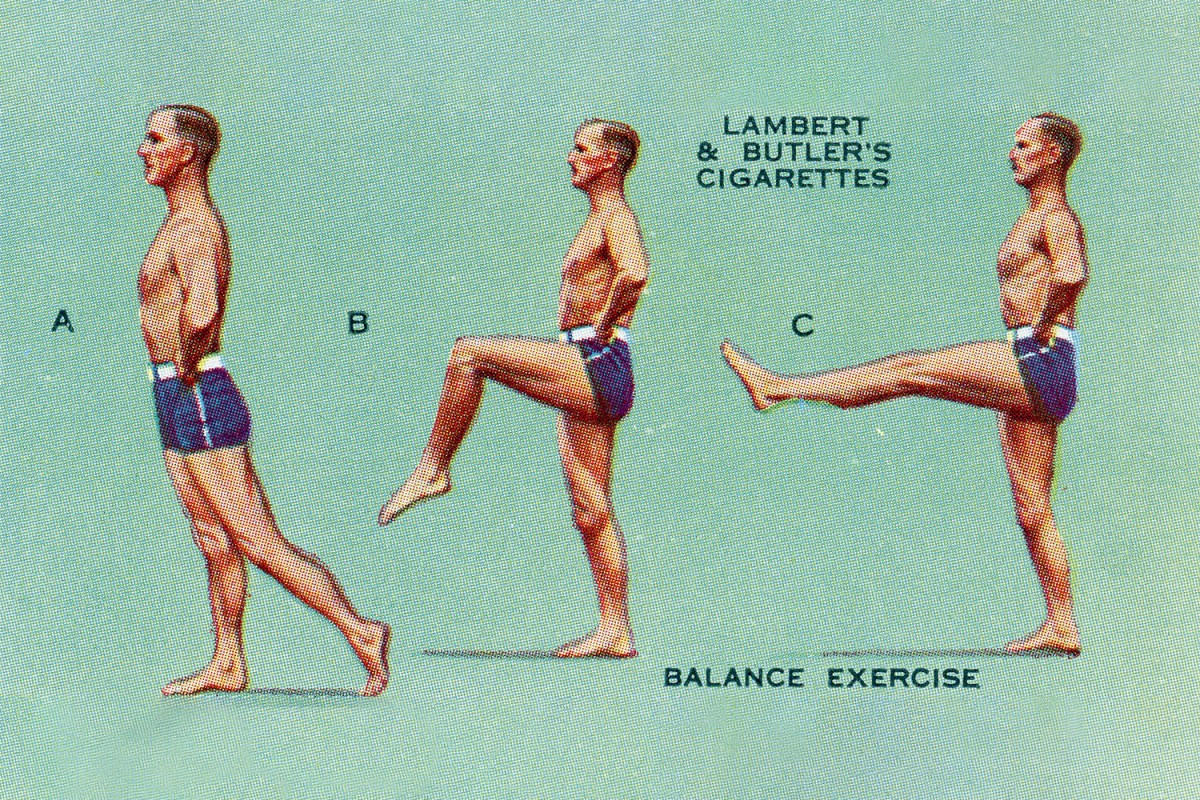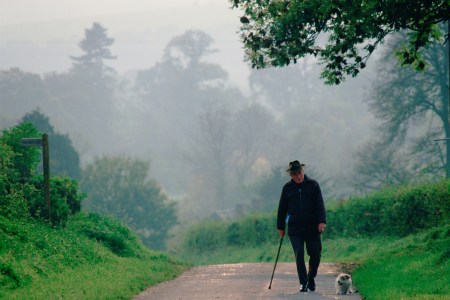“Aging gracefully” doesn’t have to mean mean completing road races at 90.
All power to the running, lifting and pickleballing pensioners with zero intention of slowing down, but less heralded movements — opening a jar, leaning over to pull out a weed, getting up from a chair — all deserve to be considered triumphant at a certain age, too.
Consider: for every aging person, hurtling towards life’s single guarantee, tasks that never used to warrant a second thought will one day get extremely difficult.
Things will fall out of our hands, or we’ll fall ourselves, shattering vases and bones along the way. But too often, it’s a senior’s self-confidence, motivation and happiness that burden the brunt of the damage.
Longevity fitness isn’t just about finding ways to tack years onto one’s life, willy-nilly. It’s about preparing oneself to live well in their later years, however many arrive. And one of the best ways to prepare for — and preemptively appraise — one’s longevity, is to take periodical mobility tests.
These aren’t sexy movements. Mobility tests aren’t particularly rigorous, either. But taking note of how well you can reach, bend, scratch and stroll will help piece together the precise areas where you could use some improvement. Below, we’ve compiled 15 mobility tests that check everything from trunk flexibility to how far you can walk around a track in six minutes.
While it’s never too early to check in on mobility function, we’ve explicitly included favorable results for a retirement-aged man of 65. Disclaimer: these are general guidelines, and might not apply to everyone, you should always check with your doctor before engaging in exercise beyond your current limits.
A Fitness Guide to Preventing Dangerous Falls in Old Age
Costly tumbles amongst seniors are an epidemic. Get ahead of them now.The Chair Stand Test
What to do: Sit in a sturdy, armless chair with your feet flat on the floor. Cross your arms over your chest. Stand up and sit back down as many times as possible in 30 seconds.
What you want at 65: Somewhere in the realm of 12 to 18 repetitions within the timeframe would demonstrate a solid command of one’s lower body strength and functional mobility.
The 4-Stage Balance Test
What you do: Begin with your feet side by side. Progress to a semi-tandem stance (one foot slightly behind the other). Then attempt a tandem stance (one foot directly in front of the other). Finally, try standing on one leg. Time how long you can hold each position, with a maximum of 10 seconds per stage.
What you want at 65: Successfully holding each position for 10 seconds indicates excellent balance.
The Timed Up-and-Go Test
What to do: Sit in a sturdy, armless chair with your feet flat on the floor. Put a piece of tape on the ground 10 feet away. Enlist a personal timer. When they say “Go,” stand up, walk 10 feet, turn around, walk back, and sit down.
What you want at 65: 10 seconds or less is a solid showing for one’s agility and balance at retirement age.
The Sit-and-Reach Test
What to do: Sit on the floor with your legs extended in front of you and feet against a wall or box. Slowly reach forward with both hands, keeping your knees straight. Have someone measure the distance between your fingertips and your toes.
What you want at 65: A score in the range of 7-11 inches (or 18-28 cm) is considered average flexibility.
The Handgrip Strength Mobility Test
What to do: Hold a handgrip dynamometer in your dominant hand, with your arm at a right angle. Squeeze the dynamometer with everything you’ve got. Jot down your best mark.
What you want at 65: A grip strength of 86-119 lbs for each hand. For more on grip strength, head here. It’s one of the most underrated predictors of longevity.
It’s Never Too Late (Or Early) to Try Tai Chi. Here’s How.
The gentle art is perfect for lifelong fitnessThe Back Scratch Test
What to do: Stand with one arm raised above your shoulder and the other behind your back. Attempt to touch or overlap your fingertips (if possible). If you’re unable to touch them, measure the distance between your fingertips.
What you want at 65: If your fingertip-to-fingertip distance is 0 to -5 cm (or 0 to -2 inches), your upper body rotational mobility is golden. Negative values represent an overlap of the fingertips.
The 6-Minute Walk Test
How to perform: Find yourself a flat, mostly straight surface. A local track works best. Walk as far and as fast as you can for six minutes, aiming for a steady pace. Measure the distance you cover in that time.
What you want at 65: A lap, at least. Getting closer to two laps (700 meters) would be particularly ideal. This isn’t just a predictor of one’s cardiovascular function or mobility, but independence, too. People who can walk longer walk more often, creating a self-promoting cycle.
The Single Leg Stance Mobility Test
What to do: Stand with your feet together and arms at your sides. Raise one foot off the ground, maintaining your balance for as long as possible. Have a personal timer clock how long you can hold the position.
What you want at 65: A man of this age should be able to maintain balance for at least 15 seconds on each leg.
The Wall Angel Test
What to do: Stand with your back against a wall, with your arms raised to form a “W” shape. Slide your arms upward into a “Y” shape, keeping your arms and back in contact with the wall.
What you want at 65: A fluid motion, without pain or compromise. This test can reveal issues with shoulder mobility and posture — considering how sedentary the workplace is getting, we should all be thinking about the latter.
The Functional Reach Test
What to do: Stand next to a wall (re-enlist the Wall Angel wall!) with your feet shoulder-width apart and your arms at your sides. Raise one arm to shoulder height, parallel to the floor. Without taking a step or losing balance, reach forward as far as possible, noting the furthest point on the wall. Measure the distance between your starting point and the furthest point reached.
What you want at 65: Ideally, you’re looking for a reach of 25-35 cm (or 10-14 inches) beyond your arm’s length while standing.
100 Ways to Live to 100: The Longevity Fitness Guide
Coastal living, board games, not eating hot dogs. It’s all in here.The Heel-to-Toe Walk Test
What to do: Find a flat, straight surface (hallways and sidewalks work well) that’s at least 10 feet long. Walk in a straight line, placing the heel of one foot directly in front of the toes of the other foot with each step. Continue for at least 10 steps.
What you want at 65: The ability to complete the test without losing balance or veering off. If you can make short work of it, you’ve a great mix of lower body strength, coordination and a little something called proprioception.
The Arm Curl Mobility Test
What to do: Sit in a sturdy, armless chair with a dumbbell in your dominant hand (10 pounds at most). With your arm at your side and palm facing up, curl the dumbbell towards your shoulder as many times as possible in 30 seconds.
What you want at 65: Try for 15 repetitions in 30 seconds. We don’t typically endorse lifting quickly; but in this case, if you’re able to go up and down at a fast cadence, that’s a good sign. Feel free to lift heavier at the gym and attempt some bodyweight moves. Make use of the assisted weight features, too!
The Ankle Plantar Flexion Test
What to do: Sit on the edge of a chair or bench with your feet flat on the floor. Slowly raise your heels off the ground, keeping your toes on the floor. Hold the position for a few seconds, then lower your heels back to the ground. Repeat for 10-15 repetitions.
What you want at 65: No pain. If you can get this done without straining/wincing, you’re in possession of good ankle strength and flexibility.
The Lateral Step-Over Test
What to do: Place a low object or line on the ground to serve as a hurdle. A broomstick works well here. Stand with your feet hip-width apart and the “hurdle” directly below you. Step over the hurdle with one foot, then follow with the other foot, moving laterally. Reverse the movement to return to your starting position. Complete as many repetitions as possible in 30 seconds.
What you want at 65: If you can complete the test without losing balance, you’ve got good hip stability and lateral mobility. If stepping over a line or broomstick is too easy, select an object that forces you to pick up your feet a little higher off the ground.
The Trunk Rotation Mobility Test
What to do: Sit on the floor with your legs extended in front of you and your feet shoulder-width apart. Retrieve that trusty broomstick and hold it behind your neck, resting it on your shoulders. Rotate your trunk to one side as far as possible, keeping your legs and hips stationary. Hold the position for a few seconds, then rotate to the opposite side. Repeat for 10-15 repetitions on each side.
What you want at 65: Completing the test with a full range of motion (and without pain) means you’re in command of your trunk flexibility and rotational mobility.
Whether you’re looking to get into shape, or just get out of a funk, The Charge has got you covered. Sign up for our new wellness newsletter today.



























